Xinjiang Food Trip Idea
Discover the Flavours of Xinjiang: A Culinary Journey Through China’s Western Frontier
Xinjiang Food FAQs
Xinjiang food is flavourful and aromatic, often using spices like cumin, pepper, and chili. It’s moderately spicy, but many dishes can be adjusted to suit your spice tolerance.
Night markets are bustling, vibrant spaces where you can sample freshly grilled meats, noodles, pastries, and local snacks. Popular ones are found in Urumqi, Kashgar, and Hotan.
Green tea is the most common, but you may also find yoghurt drinks, local soft drinks, and seasonal fruit juices. Alcohol is less common in Uighur areas due to religious practices.
Xinjiang is famous for Hami melons, grapes, apricots, walnuts, raisins, and sun-dried figs—perfect for snacking or buying as souvenirs.
Meals are often shared communally, with large platters of food placed in the centre. Bread is a staple, and tea is commonly enjoyed during and after meals.
Xinjiang Foods
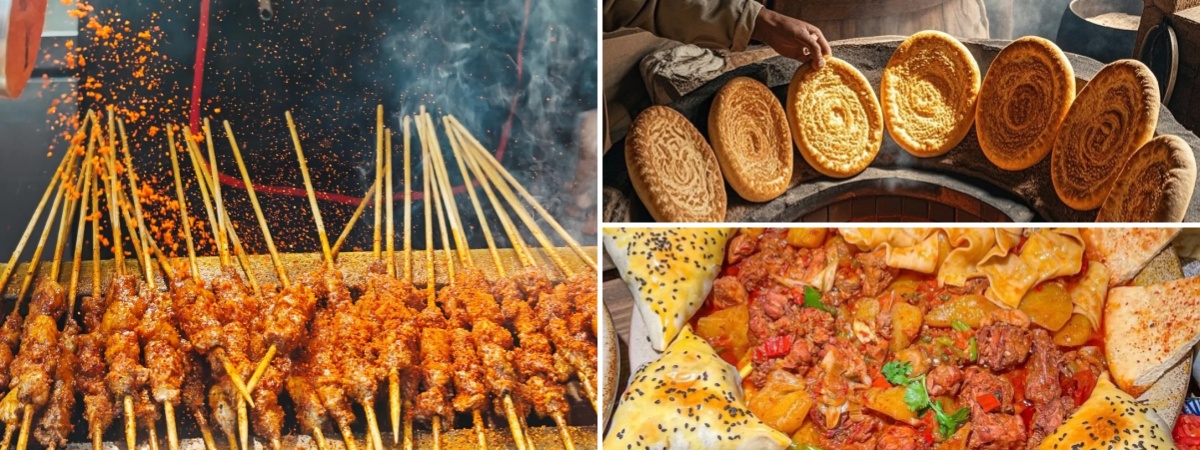
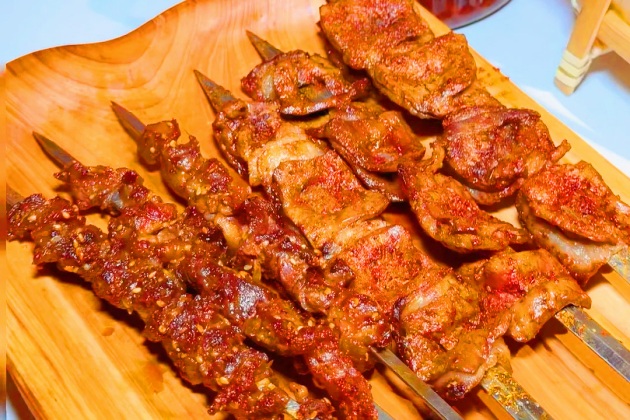
Xinjiang, located in the far northwest of China, is often referred to as a “paradise for food lovers.” The region’s rich culinary heritage blends the diverse traditions of Central Asia, the Middle East, and China, offering a unique gastronomic experience. The food here is influenced by its varied ethnic groups, including Uighurs, Kazakhs, Hui, and others.
The region’s food is often characterised by bold, aromatic spices and rich flavours, with an emphasis on grilled meats, fresh bread, and hearty stews.
Whether you’re a seasoned foodie or simply someone seeking new flavours, Xinjiang promises a culinary adventure that’s unlike any other.
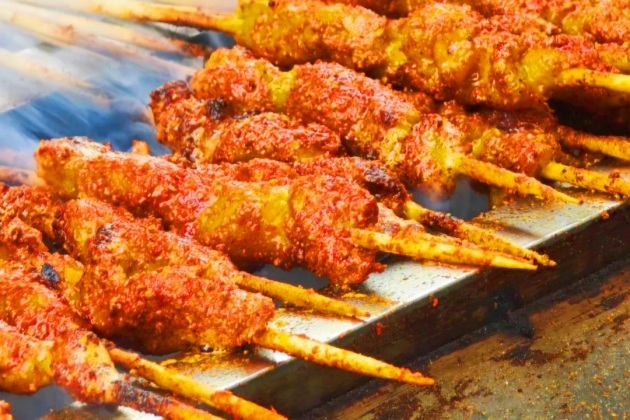
Kebabs (Kao Rou 烤肉)
These skewered, grilled lamb or beef pieces are a Xinjiang street food staple.
Marinated with cumin, chili powder, and other spices, the tender meat is charred to perfection over an open flame. The smoky aroma and juicy texture make it a must-try.
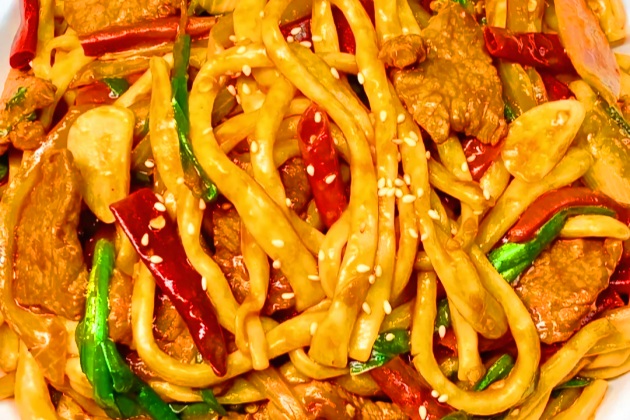
Laghman (拉面)
A hand-pulled noodle dish that features thick, chewy noodles paired with stir-fried vegetables and meat, often lamb or beef.
The dish is seasoned with a rich blend of soy sauce, garlic, and chili, creating a savoury, spicy flavour profile.
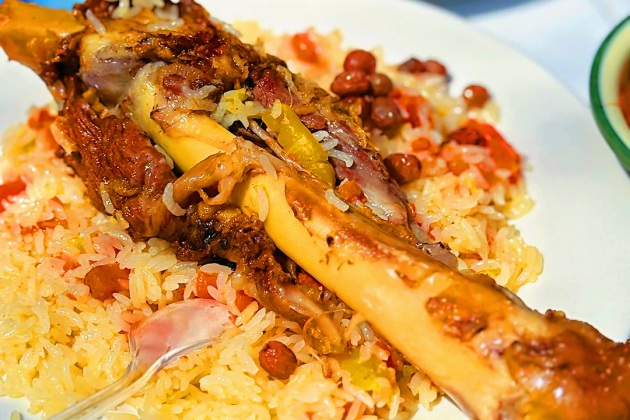
Pilaf (Polo 手抓饭)
A fragrant rice dish typically made with lamb, carrots, and onions, seasoned with cumin and saffron.
The rice is cooked in the meat’s juices, resulting in a rich, satisfying meal that is both hearty and aromatic.
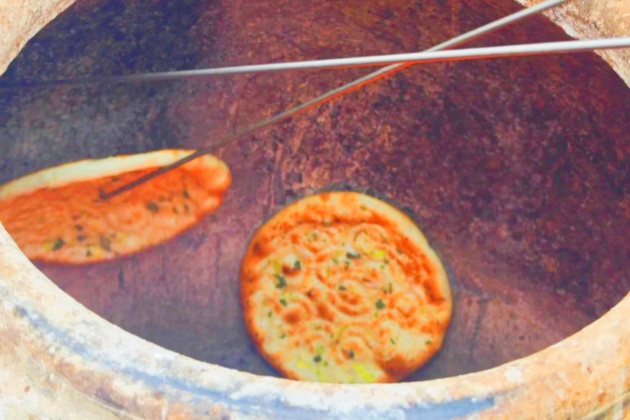
Naan (Nan 烤馕)
A round, flatbread that is commonly baked in a tandoor oven, this simple yet delicious bread is often served alongside meat dishes.
Crispy on the outside and soft on the inside, it’s perfect for dipping into stews or enjoying with kebabs.

Samsa (烤包子)
A traditional savoury pastry filled with spiced meat, usually lamb or beef, and baked until golden and crispy.
The flavours are intense, thanks to the careful use of cumin and pepper, and it’s a great on-the-go snack.
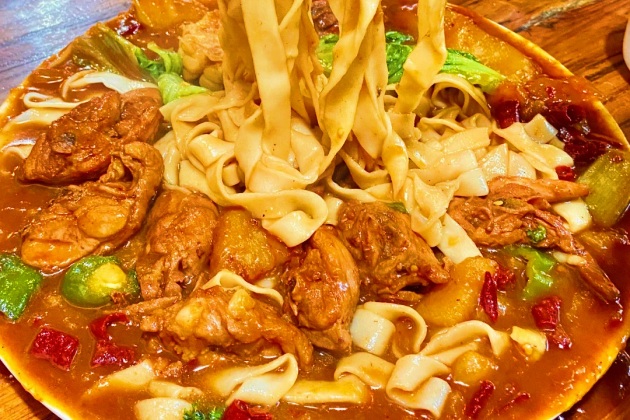
Big Plate Chicken (Da Pan Ji 大盘鸡)
A dish of braised chicken served with potatoes, peppers, and thick wheat noodles.
The combination of spicy broth and tender chicken makes this a comforting and satisfying meal, typically shared among friends and family.
More Xinjiang Routes
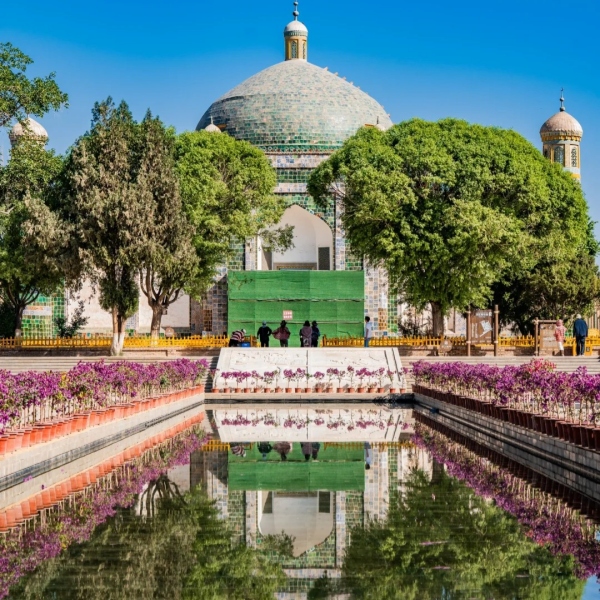
Xinjiang’s night markets are vibrant, bustling places where food stalls line the streets, offering a wide array of local delicacies. These markets come alive after sunset, and you’ll find locals and tourists alike wandering around, nibbling on snacks and enjoying the lively atmosphere.
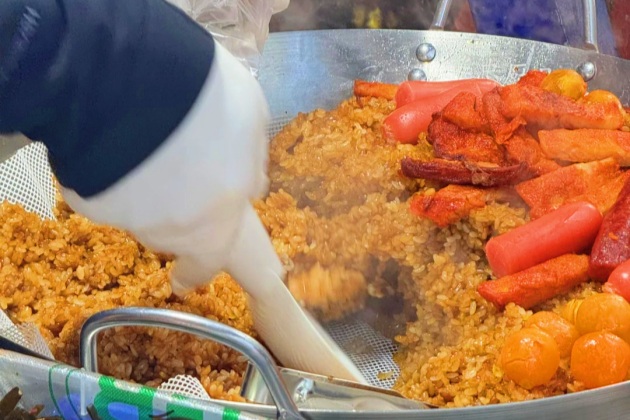
Urumqi Night Market
The capital of Xinjiang, Urumqi, is home to one of the most famous night markets.
Here, you can sample everything from grilled meats to fresh fruits, fried pastries, and local delicacies like dapanji and laghman.
The aromas of cumin, garlic, and sizzling meat fill the air as you explore the maze of stalls.
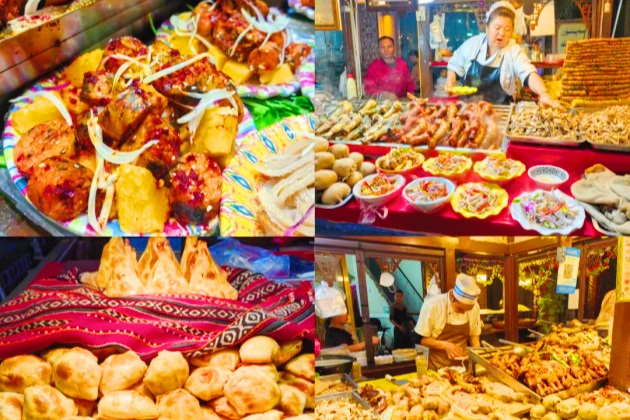
Kashgar Night Market
This is another must-visit. The Kashgar night market offers an unforgettable selection of Xinjiang snacks, including skewered kebabs, fragrant pilafs, and the legendary Xinjiang bread.
It’s an excellent place to enjoy a relaxed meal in a traditional setting.
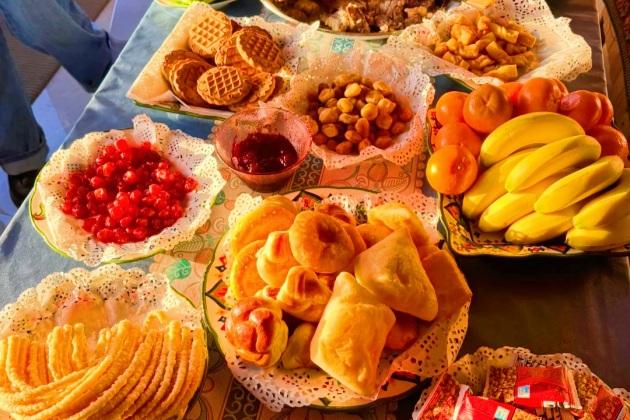
In Xinjiang, meals are often social affairs, particularly in the Uighur culture. Food is meant to be shared, with large platters of rice, meats, and vegetables placed in the centre of the table for everyone to dig into. This communal style of dining fosters a sense of togetherness.
Tea Culture: Locals drink tea throughout the day, with green tea being the most popular choice. In the cooler months, you’ll often see people sipping chay (tea) while enjoying a bowl of noodles or lamb skewers.
Feasting on Special Occasions: Special meals are often accompanied by traditional music and dancing. During celebrations like the Uighur New Year (Navruz), there’s an abundance of food, and sharing a meal is a way to strengthen community bonds.
4

Drink Bottled Water: While tap water in Xinjiang is generally safe for locals, it’s recommended to drink bottled water for tourists.
Be Careful with Street Food: Although street food is a highlight, make sure it’s cooked fresh in front of you and served hot to avoid any foodborne illnesses.
Wash Hands Frequently: With the variety of foods you’ll encounter, it’s a good practice to wash your hands frequently to avoid potential germs, especially before eating.
Try Fresh Ingredients: Xinjiang markets often offer fresh fruit and nuts, such as melons, grapes, and apricots, which are safe to eat if they are properly washed.
5
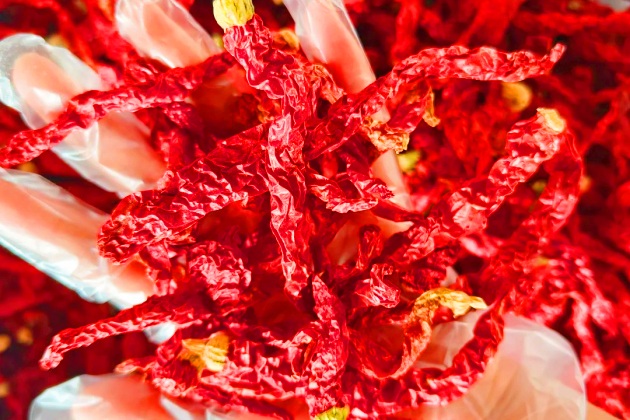
Get Comfortable with Spices: Xinjiang food is often spicy and full of bold flavours. If you’re not used to strong spices, let the vendor know your spice tolerance to ensure a comfortable experience.
Respect Local Etiquette: When dining with locals, it’s customary to wait for the eldest person to start eating first. In many homes, it’s polite to accept a second helping if offered, as refusing may be seen as impolite.
Explore Local Markets: Don’t miss visiting local markets for fresh produce, spices, and other food ingredients. These markets are a great place to learn more about the unique ingredients that make Xinjiang food so distinctive.
6
Xinjiang is a culinary wonderland, offering an unforgettable experience for food enthusiasts. From the bold, spice-laden flavours of lamb kebabs to the hearty stews and freshly baked naan, every bite tells a story of the region’s rich cultural heritage. Whether you’re feasting at a bustling night market or sharing a meal with locals in a remote village, the food of Xinjiang is sure to leave a lasting impression.
Ready to embark on this flavour-packed journey? Xinjiang awaits!
Xi'an Trip Ideas
Discover top Xi'an trip ideas, from Terracotta Warriors to street food in the Muslim Quarter. History, culture & flavour in one unforgettable journey!
Xinjiang Trip Idea
Discover bold flavours, vibrant markets, and authentic local cuisine with this ultimate Xinjiang food trip idea—perfect for adventurous food lovers!
Let's co-create your adventure along the Silk Road.
Tell us your vision for a Silk Road tour, and we'll make it a reality this year.
Let your Silk Road tour tell a thousand-year-old story.
Top Destination
Information
Copyright © 2009-2025 AsiaSilkRoadTours. All Rights Reserved.
Our website uses cookies to deliver you the best possible web experience. Learn more